While I hadn’t necessarily planned it, we’ve had quite an eventful Metroid week this week. With our Metroid Prime 3 interview on Tuesday, Pat’s review of Metroid Metal’s Expansion Pack EP on Wednesday, and our Metroid-heavy podcast yesterday, we have even more for you, and this one’s about the game in the series you’re looking forward to the most: Metroid: Other M.
When Metroid Prime 3: Corruption was released, I experimented with a feature format that I called an “audio journal,” an exploration of the game’s universe as experienced through sound. I thought I would do the same with Metroid: Other M given the unique atmosphere of the series and the emphasis on music and sound design. While Metroid: Other M isn’t long enough to warrant a three-part series like I wrote for Corruption, I hope you enjoy our audio-inspired journey into Metroid: Other M.
Dive into the aural landscape of Nintendo’s most recent Metroid title after the jump!
First of all, changes. There are a lot of changes with this Metroid title, first and foremost being that it’s a Nintendo and Team Ninja developed project as opposed to a Retro Studios project. Series composer Kenji Yamamoto is gone (working on Donkey Kong Country Returns with Retro Studios), and film composer Kuniaki Haishima is in.
While you’ll feel right at home with much of the atmospheric ambient music that is featured in Other M, you may be surprised by the absence of heavily synthesized music that is replaced with cinematic orchestral cues that really score this Metroid experience. You’ll oftentimes feel like you’re playing a survival horror game from a game design, sound design, and musical perspective, as Haishima’s timely string stabs fall right in line with jarring movements on the screen.
In terms of gameplay, while Other M takes place in a 3D environment and often feels like a Metroid Prime title, the pace is greatly quickened, and you’ll be amazed by just how cool Samus looks when she’s jumping on top of enemies and blasting them in the face. Still, however, true to the survival horror vibe I mentioned earlier, there are several key moments where the gameplay adopts an over-the-shoulder camera angle as you control Samus’s movements, unable to shoot, jump, or use the morph ball as the tension rises and you find yourself jumping out of your seat as events unfold.
With that general overview, let’s jump right into what you’ll be hearing in Metroid: Other M.
Right from the ominous splash screen that greets you when you access the disc drive from the channel menu you’ll be hearing familiar sounds from the Metroid universe. This leads into the classic Metroid title theme that you can still hear on the official Japanese website, which had me sitting in awe as the reverberating melody weaves in between heavy synth sweeps and turbulent string swells that immediately let you know you’re in for a much darker Metroid experience than ever before.
Other familiar sounds will come when you load your game. You’ll receive a concise summary of the events that have unfolded thus far, but you’ll be treated to a nice rendition of the “Theme of Super Metroid.” While the entire melody isn’t present (just the opening bass notes), it’s still a nice throwback. Similarly, the “arrival” jingle still plays when loading your game. With few exceptions, these few references that appear mostly in the beginning of the game are the only musical tie to past Metroid titles. Even the item collection jingle is absent. But don’t let that lead you to think that what’s here isn’t any good.
What you will find surprising, however, is the amount of silence that’s featured in Metroid: Other M. Haishima uses music sparingly to highlight key moments. There’s often something unsettling about the silence or light ambient backings that Haishima provides, and this approach really allows the sound effects to stand out. You’ll hear Samus’s footsteps quite often along with the bangs, crashes, clangs, and explosions from her arsenal of weapons. There will also be times when you’re exploring underwater areas, or even one instance where you’re running through a powerful gravity field, both of which have unique and considerably awesome effects on the aforementioned sounds.
The story begins when Samus receives a distress signal from a facility called the Bottle Ship where she’s joined by Galactic Federation soldiers to find out what’s gone wrong at the facility and what the exact purpose of the facility is. Numerous cutscenes provide backstory about Samus’s time in the Galactic Federation military under General Adam Malkovich, and I have to say that I’m impressed with the voice over work on the whole. The team sets out to explore the various sectors of the Bottle Ship, which, in typical Metroid fashion, cover everything from the jungle to a volcanic region to an ice world. Not the most original, but Haishima does a great job with each.
Starting in the Bottle Ship, again, there isn’t much to listen to aside from Samus’s footsteps, but there are ambient sounds weaved into the mix, including this disturbing series of noises almost sounding like a finger running down the teeth of a metallic comb. When you find yourself in a battle (there are fewer but exceptionally more difficult battles in Metroid: Other M, and you’ll find yourself dying quite frequently, which isn’t helped by the fact that enemies no longer drop energy containers), you will get a blast of familiar electronic music, similar to what Kenji Yamamoto did with the battle segments in the Prime series. However, enemies often appear unexpectedly in typical survival horror fashion, and Haishimi’s use of string stabs and vibrato only highlight the frightening nature of some of the enemies.
When you finally make your way into Sector 1, which is the jungle region, you’ll first start with nothing other than a distant computerized voice offering indiscernible warnings over the facility’s PA system. Eventually you’ll come across a cute furry creature who seemingly follows you around, although its blank stare in your direction as you make your way into a research center is rather startling. On your way in, you walk through a glass corridor where you can see giant, tree-like creatures outside. Fortunately you’re protected by the glass, but the tense music makes you think they’ll come crashing through the walls at any moment. Once you make your way into the research center, you explore the site of a biological experiment where an unfortunate scientist has met an untimely end, and the creepy synths, shuffling clicks for percussion, and sound of water drops will definitely put the hair on the back of your neck on end.
Before a rendezvous with the Galactic Federation soldiers, tense pads come in like metal plates scraping against one another, hinting at danger ahead. This is where that survival horror over-the-shoulder gameplay kicks in, and Haishima scores this part of the game perfectly with deep horns and choir-like pads. After some startling discoveries are made, an X-Files-like synth line comes in with repetitive arpeggios and a wonky bass synth.
Regarding that whole context debate that we’ve been having on the site, there is a scene where a man is down, and rather than getting some foreboding or even solemn music, you instead get a funky tune with some groovy bass and synth lines. This is the only time that Haishima seemingly deviates from what you’d expect, although it happened to be one of my favorite tracks in the game, and in a style I’d love to hear more of from Haishima.
In the fire area (Sector 3), you’ll find yourself running through yet another glass corridor, and if you’re not careful, an enemy from the outside really will come and get you this time around. This ambush is of course accompanied by some appropriate string stabs. One of the bosses in this area will require Samus to show off her moves, running up the arms of the beast to blast it in the face with missiles. Cool moves like this are a mainstay of Other M, and are likely a product of Team Ninja’s involvement. The music, however, is a cool orchestral/electronic hybrid with rapid synth lines and pounding percussion. It really hits the spot.
On to Sector 2 (the ice area), you’re going to get back into minimalistic territory. There’s some choir work here, although the overall effect is rather chilling (no pun intended). This area features one of the most intense moments in the game. There’s a chase scene that occurs in the over-the-shoulder perspective. As you turn a corner, you see the person you’re after peaking out from crates ahead, which is really quite startling. The unsettling persistent bass and dissonant glass pads only add to the creepiness.
Eventually, you’ll make your way to a showdown with a very familiar enemy. Yes, it’s not a spoiler. You know you’re going to encounter Ridley in this game. The battle is quite epic, and the music dumps the electronic stylings of previous versions in favor of a powerful orchestral version. While this is an awesome battle, and Haishima’s arrangement is quite good, I do wish it had been mixed louder into the game, as the Ridley’s horrible screams and roars kind of take over.
When you finally make your way to the final area of the game, Haishima pulls out all the stops. The corridors light up as you make your way through them, accompanied by a huge orchestral sound with epic strings. This, followed by an emotional cinematic sequence that contains harpsichords and strings, will have you believing with me that this is definitely Nintendo’s most high quality soundtrack to date. After a few epic battles, you’ll finally find yourself facing these annoying enemies in a first-person perspective. The idea here is to trigger an end to the battle, although it took me dying about 20 times over 30 minutes to trigger the event (I still don’t know what I did, and this was incredibly frustrating). The musical accompaniment during this section is a Halo-esque tribal percussion section and not much else. It was certainly cool at first, so I hope that when you get to this point you don’t have to listen to it for as long as I did. There’s a familiar sequence at the very end of the game that features some familiar sounds, but I won’t spoil it for you. I think you can already guess based on how other Metroid titles have ended.
The ending cinematic will treat you to majestic strings and choir as Samus traverses the galaxy, and after the use of a rather unconvincing synth choir (I thought I was back in the Prime series for a moment), Haishima introduces a catchy Star Wars-esque melody line before ending on the same note he began: the original Metroid opening theme. After beating the game, the menu screen music will be replaced with an emotional piano piece before transitioning into the opening theme, giving you somewhat of a release from the dark intensity of the game, and letting you reflect on what you’ve accomplished.
While Metroid: Other M is not a long game (it took me about 10 hours to complete), it certainly is one of my favorites on the Wii. It admittedly does feel a whole lot like the Metroid Prime series, but the flashiness that Team Ninja has brought to the table along with the powerful cinematics and storytelling, and of course, Haishima’s quality score have really taken the series up a notch. During the credits, you’ll see that the performance of the music in the game is credited to the Arigat Orchestra and the Asian Philharmonic Orchestra, letting you know that there are truly some quality live performances here. Given how long the game is, I imagine all of the music could easily fit on a single disc, so I hope Nintendo does the right thing and gives us a soundtrack release this time.
I hope you pick up Metroid: Other M when it’s released next week. I think we need to encourage Nintendo to create darker and more mature titles like this game, and with any luck, the success of Other M may pave the way for more collaborations with Team Ninja. When you do get the chance to play the game, jump back into this article and let us know what you think of the music and sound design. I’d love to hear what everyone thinks.
Will you be picking up the game next week? Do you think the change in direction from the Prime titles is a good idea?
Tags: Audio Journal, Features, Game Review, Kuniaki Haishima, Metroid, Metroid: Other M, Nintendo, Reviews, Team Ninja, Videogame





























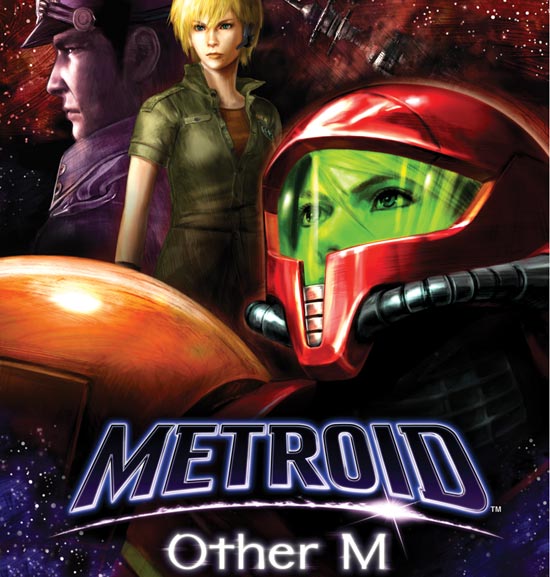
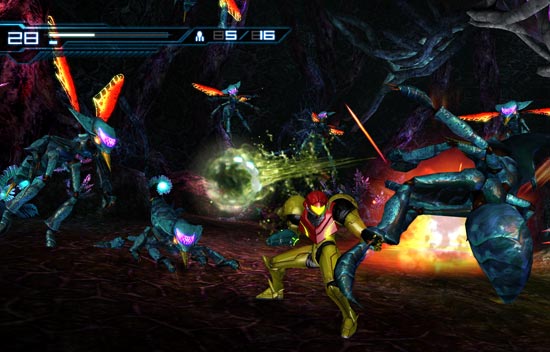
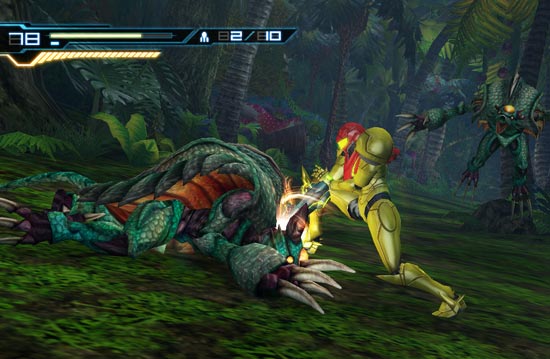
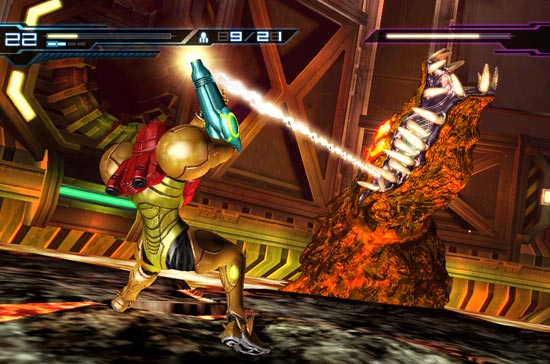


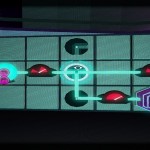








I never noticed how much of an impact Yamamoto had on the Metroid series. He created songs that help tell the story of the game and emphasize on the atmosphere around you. And for me, Haishima failed to do this. As I was playing Other M, I kept thinking to myself, would I want to listen to this song outside of the game? No. Does this music fit the action? Yes, but in a generic way. Kenji is the hidden character to Metroid like John Wiliiams is to Star Wars.
Yes, Kenji Yamamoto is quite the master at creating Metroid music. I liked a lot of what Haishima did, but yes, it’s definitely more cinematic and matched to the game, and would be less interesting out of context. I’d still love to hear it on CD though, especially that funky track I mentioned above.
One Last thing. When I started the game, I noticed Haishima created that empty desolate atmosphere that’s been traditional in the beginning of Metroid games. I was happy. But after 6 hours, I was like “When is my adventure going to start?”. Kenji was great at starting the games like that, then moving to more adventurous, exploration like music. So by the end of Other M, I felt as though I never even started. In Prime games it was cool to go back to a room and think “Wait, there used to be music here, now there’s not. What’s up?”. Then you’d walk with caution. So for me, Other M? C-. I love the game, but the music killed it for me. There’s no sense of flow, for me. I kept thinking, is the game going to start now? Had this game come out after Fusion and before any Prime games, I would’ve liked it, alot. But Kenji raised the bar really high. Even the composer of Metroid Prime: Hunters TRIED to imitate him.
Well as growing up playing all the metroid games,the music to me is the other half of the game!! and it wasnt there for me.so because of the lack there of, i felt disasociated from the game a bit and i loved the game, but i hope they will keep trying maybe next time includ some familier metroid music lol.
To be honest, contrary to the general opinion in your article, I would have liked to see more underscoring for the entire game. Everything Haishima does he does well, but I wanted more of it. From the time you go into the final boss fights, everything is amazing, but why not bring the rest of the game up to the same level? I wonder if there simply wasn’t enough time/money to do so? I’d like to see a mix of synth and orchestral music combined for each track. I think the synth is important for a sci-fi genre game/show/movie. Orchestral tracks alone risk sounding like Star Wars or Star Trek. Not to mention, that’s where Metroid’s roots lie. But this game was unlike any other in the series due to the highly cinematic and dramatic storyline, which fostered some emotional content. To pull everything together in an ideal Metroid soundtrack, I think synth is needed for the sci-fi connection and if the game is more emotional, like Other M, definitely combine it with orchestra.
I tried to understand the game. When playing, I think of the reasons of why the game sounded like that. And I had a pretty good experience, I can’t imagine walking on those areas with actual music. It would ruin the feel of the game. So yeah. But I have to admit I listened to Brinstar Green Vegetation Area while playing in sector 1.
Seems to be that I’m the only person that dug the game’s soundtrack. Granted, I’m with all of you in wishing that Yamamoto was still on board, as I’d love to hear more SM/Prime-esque goodness, but I think Haishima really brought a quality sound to the game (there were key moments in the Prime series where Yamamoto abandoned his quality electronic score for MIDI-esque orchestral elements). I think Haishima has created a soundtrack that fits the game, although I would have liked to have heard him pay more tribute to past Metroid tunes.
[…] source TAGS: Metroid, Metroid Other M […]
I thought those orchestral pieces for Corruption were all Minako Hamano. Speaking of which… I did not like the soundtrack for Fusion. But as much as I didn’t like it, it went perfectly well with the game’s story and action. I don’t know how to explain it. But her music felt like “Metroid”. So even though I wasn’t fond of that soundtrack, I’m wasn’t complaining about it. It fit the game, which I liked. Haishima on the other hand… yeah he’s not for me. I really wished the composer of Ninja Gaiden for the X-box did Other-M. His music was astonishing. Much like Yamamoto, he had choirs, great Melodys, and subtle electric guitars, some ambient tracks, and some action/battle songs. OH WELL 🙂 The End
Interesting point. When I first wrote those questions for Kenji Yamamoto, I hadn’t yet completed the game. I beat it shortly after submitting the questions, and wanted to add a question about Minako Hamano and the other composer listed’s contributions, but I didn’t get it added in time.
I personally didn’t care for Ninja Gaiden as a game or as a soundtrack, although a lot of people seem to dig it.
For me, the soundscape of Other M couldn’t have worked much better. I guess I’m one of the weird ones then, huh?
All the atmospheric/creepy/haunting ambient tracks were pretty much just what I hoped for. I’ve been playing Metroid games since I rented the original Metroid sometime during the late 80’s (I’m pretty sure it was -88, which means I was 8 years old…) and a new addition to the series is always a big deal for me. I’ve always seen the series (especially the 2D-titles) as a series of scifi-horror games: you’re usually alone in an isolated location surrounded by monsters, and if you happen to have help on your side your pals just keep dropping like flies, one by one. Other M is actually pretty heavy on the horror apartment, which I think is great. The ambient-heavy approach was the right decision.
The fast-paced electronic pieces played during action segments are really not bad either. Most times they manage to give that little adrenaline rush you need after the long silent moments spent wondering around empty corridors.
Story-wise, I think Other M is the first Metroid game that was not supposed to be another mindblowingly epic tale of undergoings of this Power Suit clad bounty hunter, but rather more intimate story about Samus’ past. This time the game isn’t really about saving the Galaxy. It’s about Samus and Adam. The alternate title screen theme really underlines this. The emotional charge in this beautiful piano piece is as subtle as the whole story of the game.
Other M and it’s soundtrack gets five stars from me.
I dunno if it was my TV or if it was to low the volume, but the music was barely blasting on the speakers because of the loud sound effects. Still, the music was great most of it, but there was a couple of pieces that were really annoying, like the song for the Space Pirates that sounded so claustrophobic (or maybe that was their intention? I dunno). But the song that took the cake was the Ridley’s theme which was the best arranged version of this theme.